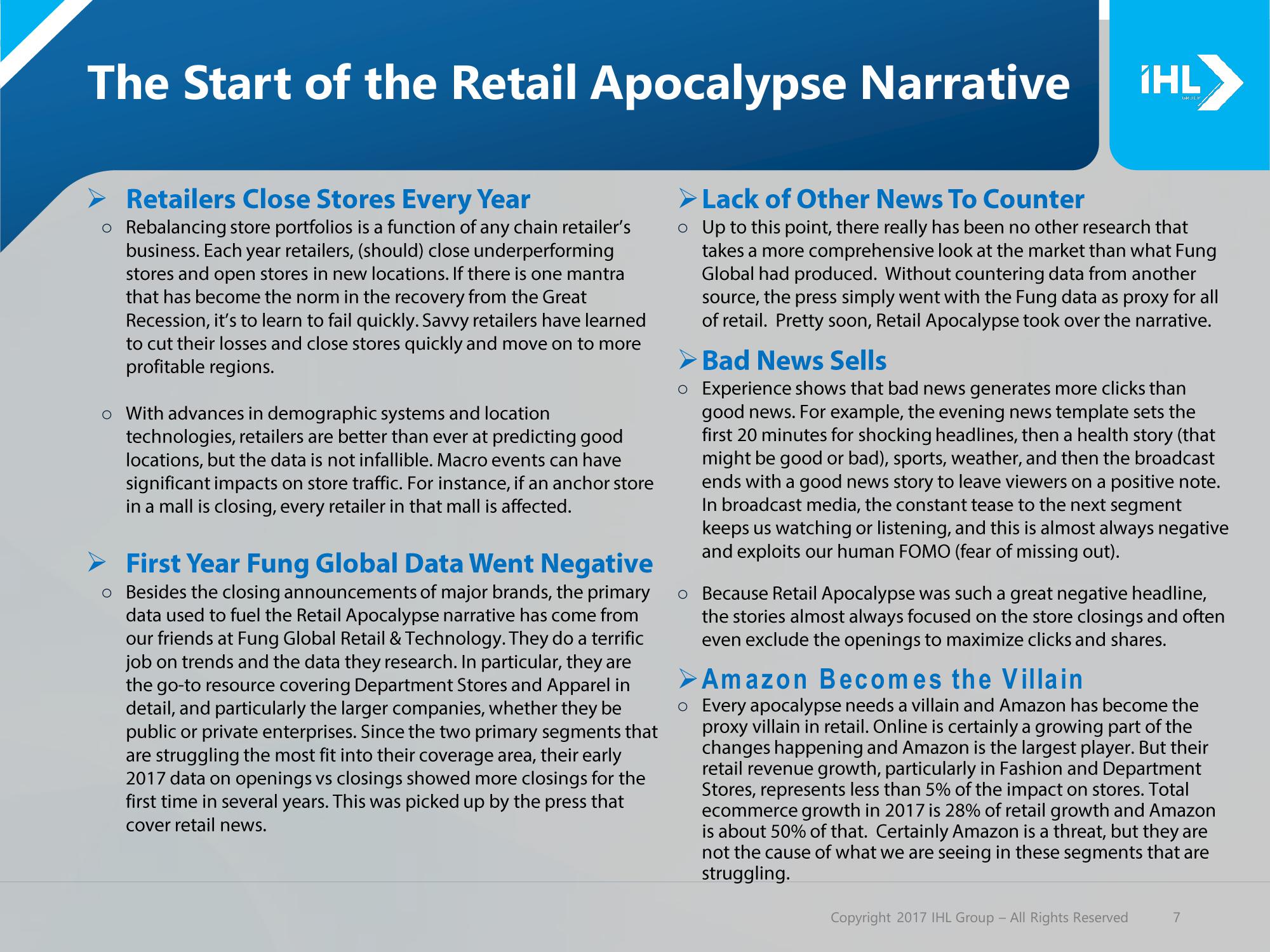Debunking the Retail Apocalypse
The Start of the Retail Apocalypse Narrative
> Retailers Close Stores Every Year
o Rebalancing store portfolios is a function of any chain retailer's
business. Each year retailers, (should) close underperforming
stores and open stores in new locations. If there is one mantra
that has become the norm in the recovery from the Great
Recession, it's to learn to fail quickly. Savvy retailers have learned
to cut their losses and close stores quickly and move on to more
profitable regions.
o With advances in demographic systems and location
technologies, retailers are better than ever at predicting good
locations, but the data is not infallible. Macro events can have
significant impacts on store traffic. For instance, if an anchor store
in a mall is closing, every retailer in that mall is affected.
➤ First Year Fung Global Data Went Negative
o Besides the closing announcements of major brands, the primary
data used to fuel the Retail Apocalypse narrative has come from
our friends at Fung Global Retail & Technology. They do a terrific
job on trends and the data they research. In particular, they are
the go-to resource covering Department Stores and Apparel in
detail, and particularly the larger companies, whether they be
public or private enterprises. Since the two primary segments that
are struggling the most fit into their coverage area, their early
2017 data on openings vs closings showed more closings for the
first time in several years. This was picked up by the press that
cover retail news.
¡HL
> Lack of Other News To Counter
o
Up to this point, there really has been no other research that
takes a more comprehensive look at the market than what Fung
Global had produced. Without countering data from another
source, the press simply went with the Fung data as proxy for all
of retail. Pretty soon, Retail Apocalypse took over the narrative.
Bad News Sells
o Experience shows that bad news generates more clicks than
good news. For example, the evening news template sets the
first 20 minutes for shocking headlines, then a health story (that
might be good or bad), sports, weather, and then the broadcast
ends with a good news story to leave viewers on a positive note.
In broadcast media, the constant tease to the next segment
keeps us watching or listening, and this is almost always negative
and exploits our human FOMO (fear of missing out).
o Because Retail Apocalypse was such a great negative headline,
the stories almost always focused on the store closings and often
even exclude the openings to maximize clicks and shares.
➤ Amazon Becomes the Villain
o Every apocalypse needs a villain and Amazon has become the
proxy villain in retail. Online is certainly a growing part of the
changes happening and Amazon is the largest player. But their
retail revenue growth, particularly in Fashion and Department
Stores, represents less than 5% of the impact on stores. Total
ecommerce growth in 2017 is 28% of retail growth and Amazon
is about 50% of that. Certainly Amazon is a threat, but they are
not the cause of what we are seeing in these segments that are
struggling.
Copyright 2017 IHL Group - All Rights Reserved
7View entire presentation